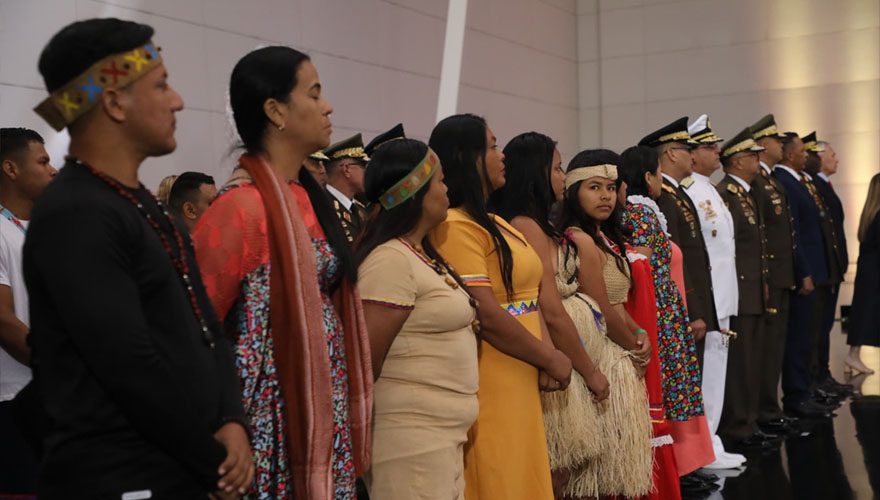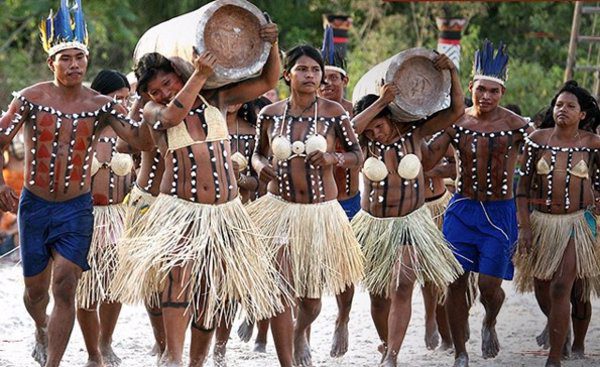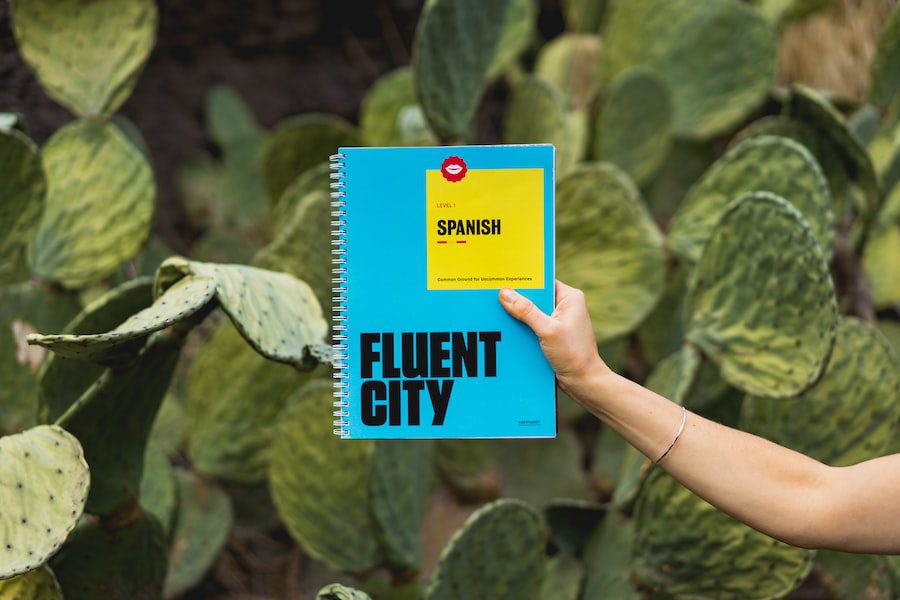Reviving the Lost Language: Exploring the Rich Culture and History of Cumanagoto Language

Cumanagoto Language is an indigenous language spoken by the Cumanagoto people in Venezuela. It belongs to the Cariban language family and has its roots in the pre-Columbian era. The Cumanagoto people have a rich history and cultural heritage, and their language plays a vital role in preserving their identity and traditions.
The Cumanagoto language has evolved over centuries, influenced by various factors such as contact with other indigenous groups, colonization, and globalization. Despite these influences, the language has managed to retain its unique features and remains an important part of the Cumanagoto people’s cultural fabric.
Language is a vital part of human connection and shared global humanity. Languages have the power to build and connect different societies through learning about ideas, perspectives, and behaviors that may be different from one’s own culture. Language also helps to preserve cultures and knowledge and allows for ideas and information to spread worldwide.
Importance of the Language Archive
Started in the late 1990s, The Language Archive represents a landmark for language documentation and depicts little known and understudied communities. The recordings are done by world leading specialists with active involvement by these speech communities.
The Cumanagotos live in the northeastern region of Venezuela, mainly in the Unare basin that drains to the Caribbean Sea and not towards the Orinoco like the other Llanero rivers. The Unare is an extensive depression that connects the upper Llano with the sea and constitutes the only communication between the Llanos and the Caribbean Sea. The Cumanagotos belong to the large Carib linguistic family, one of the
largest in the South American lowlands.
This indigenous people shares very similar organizational resources with other Caribbean-speaking societies (Morales-Méndez and Arvelo Jiménez, 1981). Among them, it is worth mentioning bilateral kinship, a great socio-political factionalism, lack of
coercive political bodies and figures, leadership based on the ability to convince and the existence of politically autonomous villages, although closely related through various social ties.

Additionally, the existence of regional blocks and sub-blocks and participation in regional interethnic systems stand out , elements that contrast with a strong ideology of autonomy and the aforementioned factionalism. It is likely that the Cumanagotos, rather than an autonomous ethnic entity, ethnic group or people, were a regional block of a larger society or social formation, that is, a macroethnic group that, in turn, would speak a macrolanguage with dialectal variants.
The macro-ethnic group could be called, as we have pointed out, “ northern Caribs ” and must have extended from the coast of Paria to Lake Valencia , approximately. In turn , it is possible that the ancient Cumanagotos had regional sub-blocks as evidenced by several ethnonyms collected in colonial sources (Civrieux, 1980).
This macro-ethnic group would have, for its part, at least four subgroups, from east to west (see Map 1): i) the Chaimas in the Turimiquire mountain range, ii) the Cumanagotos in the Unare depression, iii) the Guaiqueríes on the islands and northeastern coasts and iv) the aborigines of the north-central region.
The Cultural Significance of the Cumanagoto Language: Exploring its Unique Identity
Language plays a crucial role in shaping cultural identity. It serves as a vehicle for expressing cultural values, beliefs, and practices. The Cumanagoto language is no exception. It reflects the unique worldview, history, and traditions of the Cumanagoto people.
The Cumanagoto language has distinct linguistic features that set it apart from other languages in the region. For example, it has a complex system of noun classification based on gender and animacy, which reflects the Cumanagoto people’s close relationship with their natural environment. Additionally, the language has a rich oral tradition, with storytelling and poetry being important cultural practices. The Cumanagoto language allows the Cumanagoto people to express their cultural identity and preserve their heritage.

The Challenges of Reviving the Cumanagoto Language: Overcoming Barriers to Preservation
Preserving endangered languages like Cumanagoto poses several challenges. One of the main obstacles is the lack of resources and speakers. Many indigenous communities face economic and social marginalization, which hinders their ability to invest in language preservation efforts. Additionally, the younger generations are often more inclined to learn dominant languages for better economic opportunities, leading to a decline in intergenerational transmission of indigenous languages.
The Cumanagoto language revival project faces similar challenges. The number of fluent speakers has significantly decreased over the years, making it difficult to pass on the language to future generations. Moreover, there is a lack of written resources and documentation, which makes it harder to teach and learn the language. However, despite these challenges, there is a growing recognition of the importance of preserving indigenous languages, and efforts are being made to overcome these barriers.
The Role of Technology in Preserving Endangered Languages: The Cumanagoto Language Revival Project
| Challenges | Barriers |
|---|---|
| Lack of speakers | Many Cumanagoto speakers have passed away, leaving few fluent speakers to pass on the language. |
| Lack of resources | There is a lack of written materials and resources available for learning and teaching the Cumanagoto language. |
| Language shift | Many Cumanagoto speakers have shifted to speaking Spanish, the dominant language in the region. |
| Stigmatization | The Cumanagoto language has been stigmatized and devalued, leading to a lack of interest in preserving it. |
| Geographic isolation | The Cumanagoto people are geographically isolated, making it difficult to connect with other communities and resources for language preservation. |
Technology has played a crucial role in language preservation efforts around the world. It has provided new tools and methods for documenting, teaching, and revitalizing endangered languages. The Cumanagoto language revival project has also embraced technology as a means to preserve and revitalize the language.
One of the key tools used in the project is digital recording equipment, which allows linguists and community members to document and archive spoken Cumanagoto. This ensures that the language is preserved for future generations and can be studied by linguists and researchers. Additionally, technology has enabled the creation of online resources, such as language learning apps and websites, which make the language more accessible to a wider audience.
The Cumanagoto Language and the Environment: Exploring the Relationship between Language and Landscape
Language is deeply intertwined with the natural environment. It reflects the relationship between a community and its surroundings, including the landscape, flora, and fauna. The Cumanagoto language is no exception. It contains words and expressions that are specific to the local environment and reflect the Cumanagoto people’s deep knowledge of their surroundings.
For example, the Cumanagoto language has a rich vocabulary related to plants, animals, and natural phenomena. This reflects the Cumanagoto people’s close connection with nature and their reliance on it for sustenance and cultural practices. By preserving the Cumanagoto language, we also preserve this unique knowledge of the environment.
The Cumanagoto Language and Traditional Knowledge: Preserving Indigenous Wisdom

Indigenous communities possess a wealth of traditional knowledge and wisdom that has been passed down through generations. This knowledge encompasses various aspects of life, including agriculture, medicine, spirituality, and sustainable resource management. Language plays a crucial role in preserving and transmitting this traditional knowledge.
The Cumanagoto language is a repository of indigenous wisdom. It contains words, phrases, and stories that encapsulate the Cumanagoto people’s understanding of the world around them. By preserving the language, we ensure that this valuable knowledge is not lost but can continue to benefit future generations.
The Cumanagoto Language and Education: Integrating Indigenous Languages into Formal Learning
Integrating indigenous languages into formal education systems is essential for their preservation and revitalization. It not only ensures that indigenous children have access to education in their mother tongue but also fosters a sense of pride in their cultural heritage.
The incorporation of the Cumanagoto language into the education system presents both challenges and opportunities. On one hand, there is a need for trained teachers and resources to develop curriculum materials in the Cumanagoto language. On the other hand, integrating the language into the education system can help create a new generation of fluent speakers and ensure the long-term survival of the language.
The Future of the Cumanagoto Language: Sustaining a Living Language for Generations to Come
Sustaining a living language requires long-term commitment and collaboration between various stakeholders, including indigenous communities, linguists, educators, policymakers, and governments. The Cumanagoto language revival project has developed strategies and plans to ensure the long-term survival of the language.
These strategies include community-based language revitalization programs, teacher training initiatives, and the development of educational resources in the Cumanagoto language. Additionally, efforts are being made to raise awareness about the importance of preserving indigenous languages and to promote their use in various domains of life.
The Power of Language in Shaping Culture, Identity, and History
Language is a powerful tool that shapes our understanding of the world and connects us to our cultural heritage. Preserving endangered languages like the Cumanagoto language is not only important for the communities that speak them but also for humanity as a whole. It allows us to appreciate the richness and diversity of human culture and history.
Efforts to preserve endangered languages require collective action and support from individuals, communities, governments, and organizations. By recognizing the significance of language in shaping culture, identity, and history, we can work together to ensure that endangered languages like Cumanagoto continue to thrive for generations to come.
If you’re interested in the preservation of endangered languages, you might also enjoy reading about the revival of the Bunganditj language. This article takes you on a journey towards cultural preservation and highlights the efforts being made to revive this indigenous Australian language. Check it out here.
FAQs
What is the Cumanagoto language?
The Cumanagoto language is an indigenous language spoken by the Cumanagoto people of Venezuela. It is a member of the Cariban language family.
How many people speak the Cumanagoto language?
As of 2011, there were approximately 1,500 speakers of the Cumanagoto language.
Where is the Cumanagoto language spoken?
The Cumanagoto language is spoken primarily in the states of Anzoátegui, Monagas, and Sucre in Venezuela.
Is the Cumanagoto language endangered?
Yes, the Cumanagoto language is considered to be endangered. The number of speakers has been declining, and younger generations are not learning the language.
What efforts are being made to preserve the Cumanagoto language?
There are several organizations and individuals working to preserve the Cumanagoto language. These efforts include language documentation, revitalization programs, and the creation of educational materials in the language.
Cumanagoto language
Itoto Maimy ( Cumanogota, Cuman, Cuman ); also Chaima ( Chayma ), Cumanagoto, Waikeri, Palank, Pariagoto or Tamanaku is an endangered Cariban language of eastern coastal Venezuela. It was the language of the Cumanagoto people and other nations. Extinct dialects include Palenque (presumably Palank ), Piritu ( Piritugoto ), and Avaricoto (Guildea 1998).